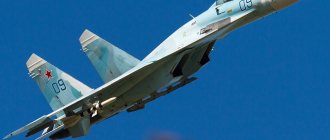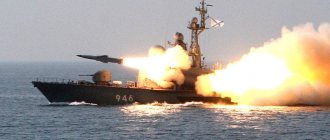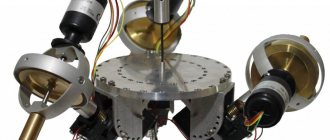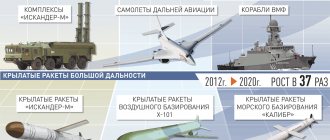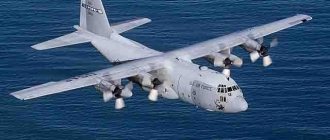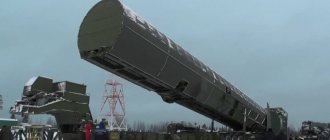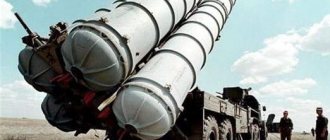Rocket propulsion is a fascinating technology. A technology that generates enough thrust to propel aircraft through the air. But did you know that rocket technology was invented by the Chinese in the 13th century?
Of course, at that time rockets were not used to launch spacecraft, but for military purposes. In 1380, the world saw its first rocket launcher, which was actually a fire arrow called a "hornet's nest" created by the Ming Dynasty.
Until the mid-20th century, rockets were not used in industrial or scientific work. In fact, the first rocket that could fly high enough to escape the earth's atmosphere was first launched in 1942 by Germany. In 1957, the Soviet Union launched the first rocket that placed the first artificial satellite (Sputnik 1) into elliptical low-Earth orbit.
Since then, space agencies and research centers have developed numerous rocket technologies to achieve efficient thrust. We list down the most popular ones that have captured people's attention over the past seven decades.
So how many types of rockets are there really? Basically, missiles can be divided into two categories:
Solid Fuel Rocket
The Space Shuttle Columbia was launched using two solid rockets.
All older rockets were propelled by solid rocket motors. However, there are now new designs, more advanced fuels and functions using solid fuels. Currently, advanced solid rocket motors are primarily used on the Delta series upper stages and the Space Shuttle twin upper stages.
Solid fuels can be made from numerous compounds, such as black powder (containing charcoal, sulfur and potassium nitrate), zinc-sulfur, potassium nitrate and composite fuels based on ammonium nitrate or ammonium perchlorate.
Because these missiles can be reliably launched in a short time and the solid propellant can be stored for a long period of time, they are often used for military purposes. Small missiles such as the Nike Hercules and Honest John and large ballistic missiles such as the Vanguard and Polaris use solid propellant engines.
Although these rockets can provide high thrust at a relatively low cost, they are not as efficient as modern liquid fuel rockets. They can only be used to launch up to 2 tons of payload into low Earth orbit.
History of creation
At the beginning of the 20th century, Tsiolkovsky formulated the basic principles of rocket science and created the first design of a liquid jet engine. He predicted that within a couple of decades, humanity would begin to explore near space. In 1909, R. Goddard proposed the idea of a multi-stage rocket, where the empty stage was separated from the structure, reducing its mass and increasing its flight range.
In 1937, a rocket center appeared in Germany, headed by W. von Braun and K. Riedel. The center was equipped with a wind tunnel for testing, and an oxygen liquefaction plant was built. The first product created was the FAU-1 projectile aircraft, on the basis of which the FAU-2 ballistic missile was then designed in 1942. With a rocket mass of 13 tons, the flight range was 300 km at a speed of 1.5 km/s.
Samples of the V-2 and the developments of German rocket scientists at the end of the Second World War reached the USA and the USSR almost simultaneously.
On their basis, a year later the Americans created the Redstone rocket. USSR scientists developed the R-1 missile in 1948, and then in 1957 successfully tested the R-7 ICBM (modified R-1).
Liquid fuel rocket
As the name suggests, liquid propellant rockets use liquid fuel to generate thrust. Unlike solid fuels, liquid fuels consist of either one or two chemicals (bipropellants). Liquid propellant is largely preferred over solid propellant due to its high density and high mass ratio for the rocket.
An inert gas is stored in the engine tank at extremely high pressure to force fuel into the combustion chamber. Although the thrusters have a lower mass ratio, they are more reliable and are therefore mainly used in satellites for orbital maintenance.
Liquid rockets can be further divided into three groups: monopropellant rockets (with one propellant), dual-propellant rockets (with two different types of fuel), and the more advanced tri-propellant rockets (with three types of fuel).
The most popular are dual-fuel rockets, powered by liquid fuel (hydrocarbon or liquid hydrogen) and a liquid oxidizer (liquid oxygen). The rocket can also use a cryogenic engine, in which both the oxidizer and the fuel are gases that turn into liquid at low temperatures.
The first recorded flight of such a rocket took place in 1926, when Professor Robert H. Goddard experimented with a device using liquid oxygen and gasoline as fuel.
"Venus"
In 1966, the USSR began interplanetary flights. The Venera 3 spacecraft made a hard landing on a neighboring planet and delivered there the Earth's globe and the USSR pennant. In 1975, Venera 9 managed to make a soft landing and transmit an image of the planet's surface. And “Venera-13” took color panoramic photographs and sound recordings. The AMS series (automatic interplanetary stations) for studying Venus, as well as the surrounding outer space, continues to be improved even now. The conditions on Venus are harsh, and there was practically no reliable information about them; the developers knew nothing about the pressure or temperature on the surface of the planet, all this, naturally, complicated the research.
The first series of descent vehicles even knew how to swim - just in case. Nevertheless, at first the flights were not successful, but later the USSR was so successful in Venusian wanderings that this planet began to be called Russian. Venera-1 is the first spacecraft in human history designed to fly to other planets and explore them. It was launched in 1961, but a week later the connection was lost due to sensor overheating. The station became uncontrollable and was only able to make the world's first flyby near Venus (at a distance of about one hundred thousand kilometers).
Plasma rocket
Plasma propulsion system 1961 Credit: NASA
In a plasma propulsion system, thrust is generated from a quasi-neutral plasma (where ions and electrons are packed in equal numbers). It is a type of electric motor that uses currents and potentials (produced within the plasma) to accelerate charged particles in the plasma.
Over the past two decades, many institutions have worked or are currently working on plasma propulsion, including the Iranian Space Agency, the Australian National University and the European Space Agency.
Plasma rockets can be easily built and used more than once due to their simple theory of operation and cheap fuel (a large number of gases, as well as combinations of them, can be used as fuel). Unlike conventional chemical rockets, plasma rockets do not use all their fuel at once, making them easily usable in flight.
However, the biggest problem with plasma rockets is generating enough electricity to turn the gases into plasma. And because of their relatively low thrust, they are not suitable for launching heavy satellites. On average, a plasma rocket can produce approximately 1/2 kilogram of thrust. Moreover, when using plasma engines, there is always a possibility of destruction of the rocket.
VASIMR (Variable Specific Impulse Magnetoplasma Rocket) are the latest types of plasma rocket motors that ionize propellant into plasma using radio waves. One of the many advantages of a plasma engine is its higher specific impulse, or Isp, than any other type of rocket.
Although plasma engines have not yet been used commercially, several small versions have already been successfully deployed and tested. In 2011, NASA, together with a Massachusetts-based propulsion company, launched the first-ever Hall thruster (plasma) into space aboard the experimental Tacsat-2 satellite.
If only everyone were KABS
In addition to the listed samples, the Russian Aerospace Forces in Syria use adjustable aerial bombs on a limited scale. Several cases of the use of KAB-500L and KAB-500Kr are known. The first of them has a laser guidance system, the second – a television one. Both have powerful warheads weighing about 400 kilograms, containing just under 280 kilograms of explosives. The accuracy of hitting the target is four to nine meters - at the level of the best world standards. The drop can be carried out from a height of 1500 meters and up to the practical ceiling of operations of front-line and attack aircraft. The distance to the object and the height of bomb release are limited by the permissible flight speed of the carrier and the target acquisition range of the seeker (up to 9 km). The probability of hitting even well-protected objects with one such ammunition is 80–85 percent or more. A powerful warhead further increases the likelihood of destroying a target, however, it also imposes restrictions on the use of such weapons in residential areas with dense buildings. Therefore, in Syria, half-ton KABs are used sporadically to destroy particularly strong objects located at a distance from residential buildings. In particular, according to reliable sources, it was precisely these bombs that destroyed the fortifications of militants in the interests of ensuring the offensive of the Syrian army.
To strike targets located in close proximity to civilian objects, our aviation uses the latest development of the Russian defense industry - KAB-250. In Syria, bombs of this type are used with a control system that provides guidance to a stationary target according to GLONASS data, similar to the American JDAM. However, our development has its own peculiarities. Firstly, it allows for release at supersonic speed, which makes it possible to separate it from the carrier at a distance of several tens of kilometers from the target and ensure a high speed of the bomb in the area of the strike target. Secondly, improved aerodynamic shapes made it possible to achieve higher accuracy in hitting the target, which is estimated at two to three meters. In combination with a relatively small warhead, this allows the KAB-250 to be used against targets located directly near objects whose destruction is unacceptable for one reason or another. This ammunition is used today in Syria for such surgical strikes.
High-precision ammunition with television and laser guidance systems is capable of hitting mobile and stationary targets without conducting detailed reconnaissance in advance. This makes it possible to effectively use KABs against quickly identified fortifications and militant defense centers.
It should be especially noted that the weapons used by Russian front-line and attack aircraft allow our aircraft not to enter the kill zone of militants’ MANPADS. And this makes it possible for now to avoid losses of our aviation group in Syria.
Ion rocket
Ion thruster ignition test at NASA's Jet Propulsion Laboratory
Ion thrusters are another form of electric propulsion that uses electrical current to accelerate positive ions. More specifically, they use electrostatic or electromagnetic force to accelerate ions and create thrust.
Ion engines ionize fuel by adding/removing electrons to produce ions. Xenon is primarily used as a fuel due to its ionizing capabilities and high atomic mass, which produces sufficient thrust when the ions are accelerated.
Because xenon is an inert gas with an impressive storage density, it can be efficiently stored on spacecraft. Most ion engines use a process known as thermionic emission to produce electrons.
Ion engines cannot operate in the Earth's atmosphere, where ions are present outside the engine. They cannot overcome any appreciable air resistance and operate only in the vacuum of space. Currently, ion thrusters (developed by NASA) are used to keep more than 100 geosynchronous communications satellites in position.
The world's first successful deep space mission using ion propulsion was NASA's Deep Space 1 (in 1990). JAXA later launched the Hayabusa spacecraft in 2003, which is still in operation.
NASA is currently working on two different ion thrusters—the ring thruster and the NASA Evolutionary Xenon thruster—to extend the life of spacecraft and reduce operating costs.
CONTENT
- 1 Early development
- 2 Technologies 2.1 Guidance systems
- 2.2 Aiming systems
- 2.3 Flight system
- 2.4 Engine
- 2.5 Warhead
- 3.1 Ballistic 3.1.1 Cruise
- 3.2.1 Anti-aircraft gun
rocket car
Opel RAK.2
You may have heard of jet cars, but what about rocket cars? Unlike a jet car, a rocket car carries both fuel and oxidizer, eliminating the need for a compressor and air intake, which in turn reduces overall weight and minimizes drag.
These cars can run their engines for short periods of time (<20 seconds) and thanks to their excellent thrust-to-weight ratio, they can reach high speeds quickly.
Rocket cars were once popular among drag racers in the United States, but after a huge rise in the price of hydrogen peroxide, they lost their edge and were eventually banned in the country due to safety concerns. However, they still operate in some parts of Europe.
In 2022, Tesla Motors unveiled its plans to produce rocket-powered road cars. It will be available as an optional extra on Roadster models. The company will integrate propulsion equipment (cold gas engines) that use compressed air to improve performance.
The bomb is a fool, the aim is great
Russian aircraft, using medium (250 kg) and large caliber (500 kg) free-fall bombs, solve the problem of hitting targeted, well-protected objects (including underground) with small forces - one or two aircraft. And this is in a context where the Islamic State militants have been under US and NATO air strikes for a long time and have managed to take measures to minimize their losses, one of which was placing their infrastructure facilities, if possible, within residential buildings in order to hide behind the civilian population. Meanwhile, no noticeable losses among it from Russian air strikes have been reported to date. Military experts explain this by the fact that the bulk of Russian aircraft sent to Syria are equipped with the latest domestic development, SVP-24.
The idea underlying this system is to ensure not precise homing of ammunition at a target, but the correct delivery of unguided weapons of their carrier to the release point. This is what makes our system fundamentally different from the American concept of turning conventional bombs – JDAMs – into precision weapons. The United States installs kits on free-fall bombs that ensure they are guided to a target using GPS data. That is, they turned ordinary bombs into controlled ones. It is clear that the cost of such a bomb increases significantly (the kit costs about 26 thousand dollars), although it remains significantly less than a full-fledged precision-guided munition. SVP-24 ensures alignment of the target with the location of the carrier, adjusted for the bomb’s flight path, calculated by the on-board computer complex taking into account hydrometeorological conditions and its ballistics. Thus, conventional ammunition acquires effectiveness commensurate with high-precision weapons.
The developers claim that the accuracy of bombing even from a height of five to six kilometers can be extremely high. Tests in testing conditions gave a standard deviation of a 250–500 kg bomb from a target of about four to seven meters. It is clear that in a combat situation additional factors are imposed that significantly reduce the accuracy of bombing. These are, first of all, errors in determining the coordinates of the target, which can reach several meters. There is also no complete information about the hydrometeorological situation and the state of the air in the target area. An additional few meters of error will be introduced by determining the location of the carrier according to GLONASS data in the combat zone. The coordinates are somewhat distorted when sharply maneuvering in the target area. Taking into account all these factors, it is possible to estimate the accuracy of the combat use of free-falling bombs using the SVP-24 at 20–25 meters. In this case, the probability of hitting a small-sized protected underground structure can be 30–40 percent, and the probability of hitting weakly protected ground objects with a medium caliber can reach 60 percent. This is quite enough to carry out high-precision and reliable destruction of designated targets with a limited number of forces: even for a strongly protected small-sized object, it is enough to use three or four bombs, and a weakly protected one will be guaranteed to be destroyed by two ammunition. In this case, the destruction zone near the affected object will not exceed several tens of meters, which is comparable to the distance between individual buildings in a typical urban development.
Thus, having 12–16 medium and large caliber bombs, the Su-24M aircraft equipped with the SVP-24 system is capable of destroying up to two targeted Islamist infrastructure facilities in one flight. It is probably for this reason that on average there is a little more than one sortie for each target hit (it must not be forgotten that attack aircraft are accompanied by support aircraft, in particular fighters). At the same time, the cost of ammunition compared to precision weapons or bombs equipped with a JDAM kit remains meager. To be fair, we note that the accuracy of a JDAM bomb will be higher - five to seven meters. That is, the probability of hitting even a protected underground structure reaches 70–80 percent. But this does not significantly affect the increase in the effectiveness of aviation operations - for the vast majority of combat missions in Syria, such accuracy is excessive.
rocket pack
The rocket pack concept has been around for almost a century, but it didn't become popular until the 1960s. It is a low-power propulsion system that transports people from one place to another over short distances.
Rocket packs typically use hydrogen peroxide as fuel to propel a person through the air. However, rocket technology has not advanced much since the 1950s. The overall mass coefficient appears to be the main culprit, limiting the flight time to seconds.
Although lightweight oxygen and steam engines can provide a decent amount of thrust, the rocket produces a relatively low exhaust velocity and therefore a weak specific impulse. Existing jetpacks can only fly for about 30 seconds, with a top speed of about 120 km/h.
Jetpacks can also be built with turbojet engines running on kerosene jet fuel. They can reach higher altitudes and have longer flights lasting several minutes, but they are difficult to build and too expensive. So far, only one working prototype has been produced, which was flight tested in the 1960s.
See also[edit]
- Anti-aircraft war
- Missile Defense Countermeasures
- Loitering ammunition
- Aero forecasting
- Center of pressure
- Team rocket
- Guided missile destroyer
- List of ships sunk by missiles
- Missile warning system
- Missile boat
- Missile defense
- Missile defense systems by country
- Rocket designation
- Rocket gap
- Missile guidance
- Missile launch control center
- Rocket launchers
- Missile range instrumentation ship
- Rocket tank
- Missile Technology Control Regime
- Rocket turret
- rocket car
- NATO missile defense system
- Proportional navigation
- Rocket Garden
- Scramjet
- Skidding into a turn
- Soft launch
- Chronology of rocket technology
- Assembly conveyor launcher
- Trajectory optimization
- Twilight phenomena
- Vertical launcher
rocket plane
X-15
Aircraft Rocket engines can also be used in aviation. Rocket planes can reach much higher speeds than similarly sized planes, but only over short distances. And because they don't require atmospheric oxygen, they are ideal for flying at high altitudes.
Rocket planes were first developed by the Germans during the First World War. However, these initial designs had some serious performance problems, which were later corrected by British engineers in the 1950s when they developed their highly efficient turbojet designs. They can provide shorter takeoffs and much higher acceleration.
Due to the intensive use of rocket engines, rocket engines are mainly used in interceptor aircraft and space planes. The X-15 is one of the most popular rocket aircraft. It was a rocket-shaped aircraft with a distinctive wedge-shaped vertical tail and short wings, built by the North American Air Force. During its operational phase, it set an altitude and speed record of 354,200 feet and 4,520 miles per hour.
Links[edit]
- ^ ab "rocket, no. and adj.” OED Online. Oxford: Oxford University Press. 2022. Retrieved March 17, 2021. 2.a.
An object thrown (manually or mechanically) as a weapon at a target.
[Citation: Maurice Leitch (1981). City of Silvera.
London: Secker and Warburg.
ISBN 0436244136 - “Then something hit him, a stone; it fell at his feet, and in a moment the air was filled with rockets, curving high to land around him on the roadway. ']. b.
Military. A long-range self-propelled weapon, controlled remotely or automatically for part or all of its path. (Initially always with a modifying word). - https://www.historylearningsite.co.uk/world-war-two/world-war-two-in-western-europe/the-v-revenge-weapons/the-v-weapons/ Official History Learning Site Version 1 and weapon V2
- "Weapon V". History Study Site
. - Archives, The National. "National Archives - Home Page".
- "Rocket, surface-to-ground, V-2 (A-4)". National Air and Space Museum
. April 1, 2016 - "World Military Powers". Independent
. Archived from the original on 2010-05-30. - Moore, Jason Nicholas (2019-09-08). Soviet bombers of World War II. Fonthill Media.
- NASA technical translation. National Aeronautics and Space Administration. 1959
- ↑
Maslov, Mikhail (February 20, 2013). Polikarpov I-15, I-16 and I-153 Aces. Bloomsbury Publishing. ISBN 978-1-4728-0161-6.
In the footsteps
"Venera 4" helped us find out that on this planet there are two hundred and seventy-one degrees in the shadow (the night side of Venus), a pressure of up to twenty atmospheres, and the atmosphere itself is ninety percent carbon dioxide. This spacecraft also discovered a hydrogen corona. Venera 5 and Venera 6 told us a lot about the solar wind (plasma flows) and its structure near the planet. "Venera-7" clarified data on temperature and pressure in the atmosphere. Everything turned out to be even more complicated: the temperature closer to the surface was 475 ± 20°C, and the pressure was an order of magnitude higher. On the next spacecraft, literally everything was redone, and after one hundred and seventeen days “Venera-8” gently landed on the day side of the planet. This station had a photometer and many additional instruments. The main thing was the connection.
It turned out that the lighting on the nearest neighbor is almost no different from that on Earth - just like ours on a cloudy day. It’s not just cloudy there, the weather has really cleared up. The pictures of what the equipment saw simply stunned the earthlings. In addition, the soil and the amount of ammonia in the atmosphere were examined, and wind speed was measured. And “Venera-9” and “Venera-10” were able to show us the “neighbor” on TV. These are the world's first recordings transmitted from another planet. And these stations themselves are now artificial satellites of Venus. The last to fly to this planet were “Venera-15” and “Venera-16”, which also became satellites, having previously provided humanity with absolutely new and necessary knowledge. In 1985, the program was continued by Vega-1 and Vega-2, which studied not only Venus, but also Halley’s comet. The next flight is planned for 2024.


